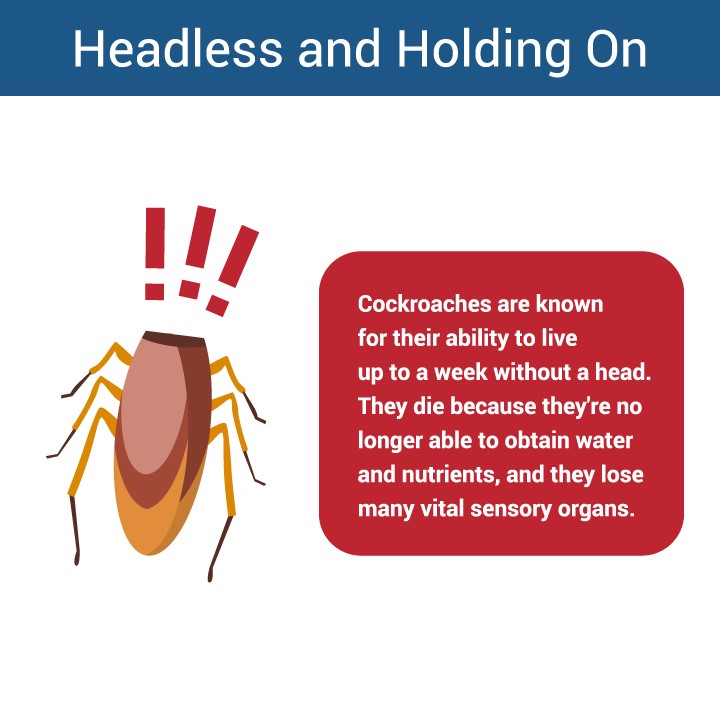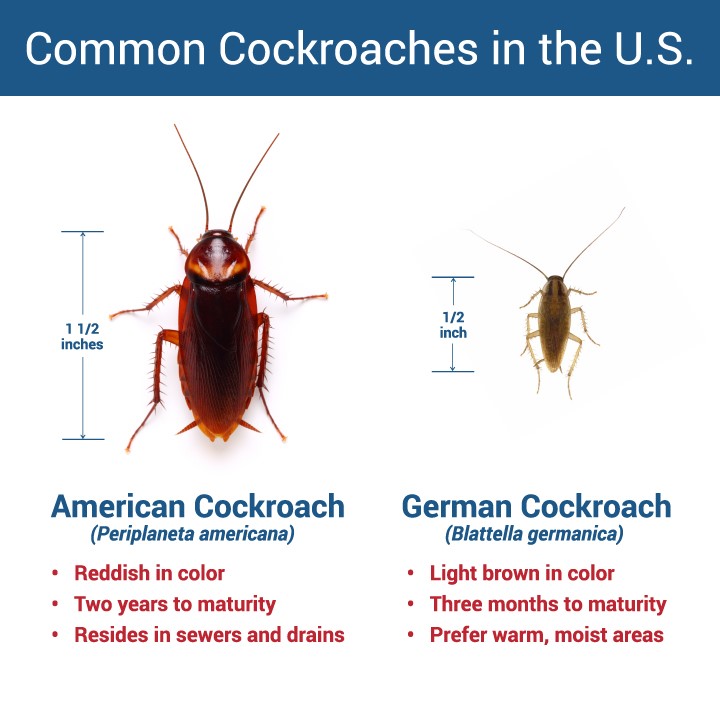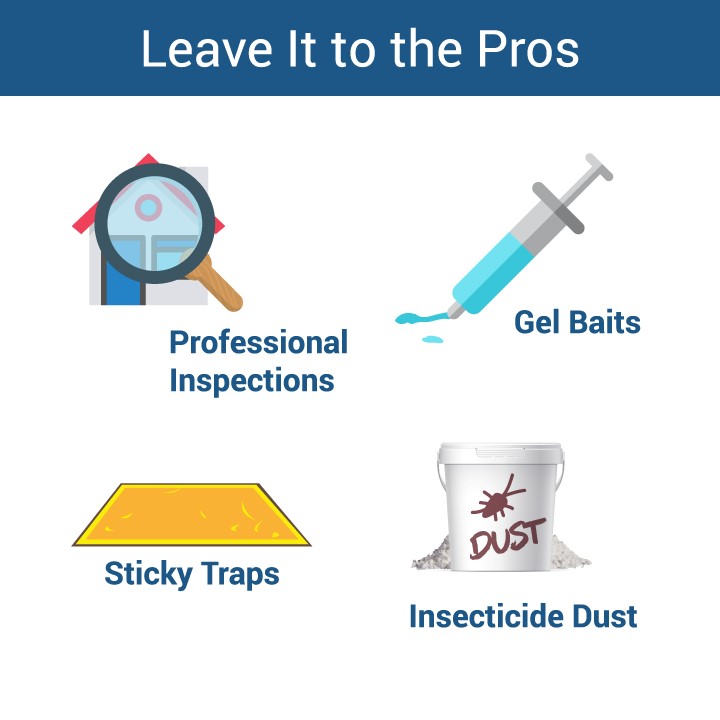Known for their resistance to nearly everything, cockroach ancestors, known as roachoids, have been traced back to the Carboniferous period 320 million years ago. Not only did roach-like animals exist before humans walked the Earth, they also pre-date some dinosaurs, meaning they survived the infamous asteroid impact that caused massive extinction 65 million years ago. The ancestors of these hardy creatures are notoriously hard to get rid of, thanks to their adaptive abilities – surviving environments ranging up to the hot tropical forests – and their capacity for reproduction.
Suited for Survival
A cockroach’s ability to adapt has played a part in their miraculous survival stories. In fact, German cockroaches have adapted to sugar traps, used as bait to eradicate them. Treatment thoroughness and completeness is important to control cockroaches.
In addition to prehistoric astral collisions and modern adaptations, cockroaches can live through dire situations, including decapitation for up to seven days, proving how tenacious they are. Their innate ability to survive and countless populations have made the cockroach a valid concern for businesses.
Here a Roach, There a Roach, Everywhere a Cockroach
With cockroaches found around the world, it’s no wonder there are over 4,500 species. Some can tolerate cold temperatures as low as 15 degrees Fahrenheit, while others are abundant in hot, tropical environments. There are even species who live in dry, desert conditions. In North America alone, there are 50 different species of cockroaches found throughout the continent.
Despite their global existence and bad reputation, only about one percent of all species are considered the bad guys – pests. In the United States, the two species we worry about most are the American cockroach and the German cockroach.
The American Cockroach
Regardless of their name, American cockroaches are not native to the U.S. They were introduced here in the 1600s from Africa and can now be found across the world. Their distribution can be traced back to the boom of global commerce.
The American cockroach is one of the largest of the common roaches, with an average length of about one and a half inches. They are reddish with a yellow band around the pronotum. This body part protects the head but is actually part of the thorax. With long antennae and hair-like thorns on their legs, cockroaches look like something out of a science-fiction movie. The American cockroach has a flattened body, just a quarter of an inch in height, allowing them to fit in tight spaces. While it takes up to two years for this species to fully mature, young roaches resemble adults without wings.
Typically residing in sewers and drains, American cockroaches are most likely to come up – and travel within – plumbing systems. They prefer warm, moist spaces like basements, boiler rooms, and bathrooms. These cockroaches are commonly found in places where food is prepared and stored – restaurants, grocery stores, and food processing and manufacturing plants – where they track in pathogens found in the sewers they travel through. These pathogens include Salmonella, E. coli, and Streptococcus.
The German Cockroach
Known to most English-speaking countries as the German cockroach, it is thought to have originated from Southeast Asia.
At only about a half inch in length, this species is much smaller than the American cockroach. They do have wings, but usually don’t fly. German cockroaches are light brown or tan in color with two black, horizontal stripes behind their head. And because it only takes three months for this species to mature, they reproduce quickly, meaning a single female roach with an egg case could cause an entire outbreak in a short time.
Thought to be a side effect of originating in a warm region, German cockroaches cannot survive the cold. They persevere all year as tenants in human structures like restaurants, hotels, and other establishments like nursing homes and hospitals. Preferring warm and moist areas, German cockroaches spend a lot of time in industrial kitchens, processing plants, and bathrooms, and they can be brought into your business by hitchhiking in packaging and boxes.
Cockroach Consequences
Cockroaches are known for being dirty. But there’s more to it than just a seemingly untidy business. These pests pick up and transmit disease-causing bacteria like Salmonella, causing food poisoning and other health hazards. This makes them an extreme risk for many industries:
• Hotels and Resorts
As if that wasn’t enough, cockroaches also have odorous secretions which alter the taste of food and, in large infestations, can cause an unpleasant smell throughout your business. Discarded exoskeletons, feces, and dander can also trigger allergies and even asthma attacks, especially in children.
Because cockroaches are omnivorous, they’ll eat just about anything. They are particularly attracted to meats, starches, sugars, and other fatty foods, but in dire circumstances, they may chew on soap, glue, and even turn cannibalistic during famine conditions. Cockroaches are more than just an eyesore, and can wreak havoc on your bottom line.
Reproach the Roach
Because of cockroaches’ abundance, affinity for hiding, and quick feet – they’ve been recorded at speeds of over three mph, which, when scaled to humans, is like running over 200 mph – they are experts at evading extermination. And while they can tolerate extreme conditions and have adapted to some pesticides and cockroach control methods, it is possible to oust them from your business.
Cockroach control should be done by a seasoned expert, as it requires sustained, strategic, and systematic measures. There’s no miracle solution, and keeping out roaches will require a number of different methods, including: cleaning, sanitizing, and sealing cracks and holes. Once you spot a cockroach, though, your best bet is to call in the pros. At Sprague, we perform in-depth treatments using:
• Monitoring programs
• And vacuum the area to pick up any residual debris and roaches
• Gel baits, which are consumed by roaches and ultimately kill them
• Proper use of insecticide dust and liquids
• Insect growth regulators stunt the reproductive capabilities of cockroaches
By using a combination of methods and treatments, your Sprague technicians will effectively eradicate the difficult-to-control cockroach population and prevent cockroaches from establishing themselves in your facility. Contact Sprague Pest Solutions to protect your business from cockroaches – the notoriously persistent pests that can damage your reputation and be a hazard to your patrons. As commercial cockroach control experts, we can help you eliminate them, whether it’s the beginning of an infestation or a large-scale affliction.




